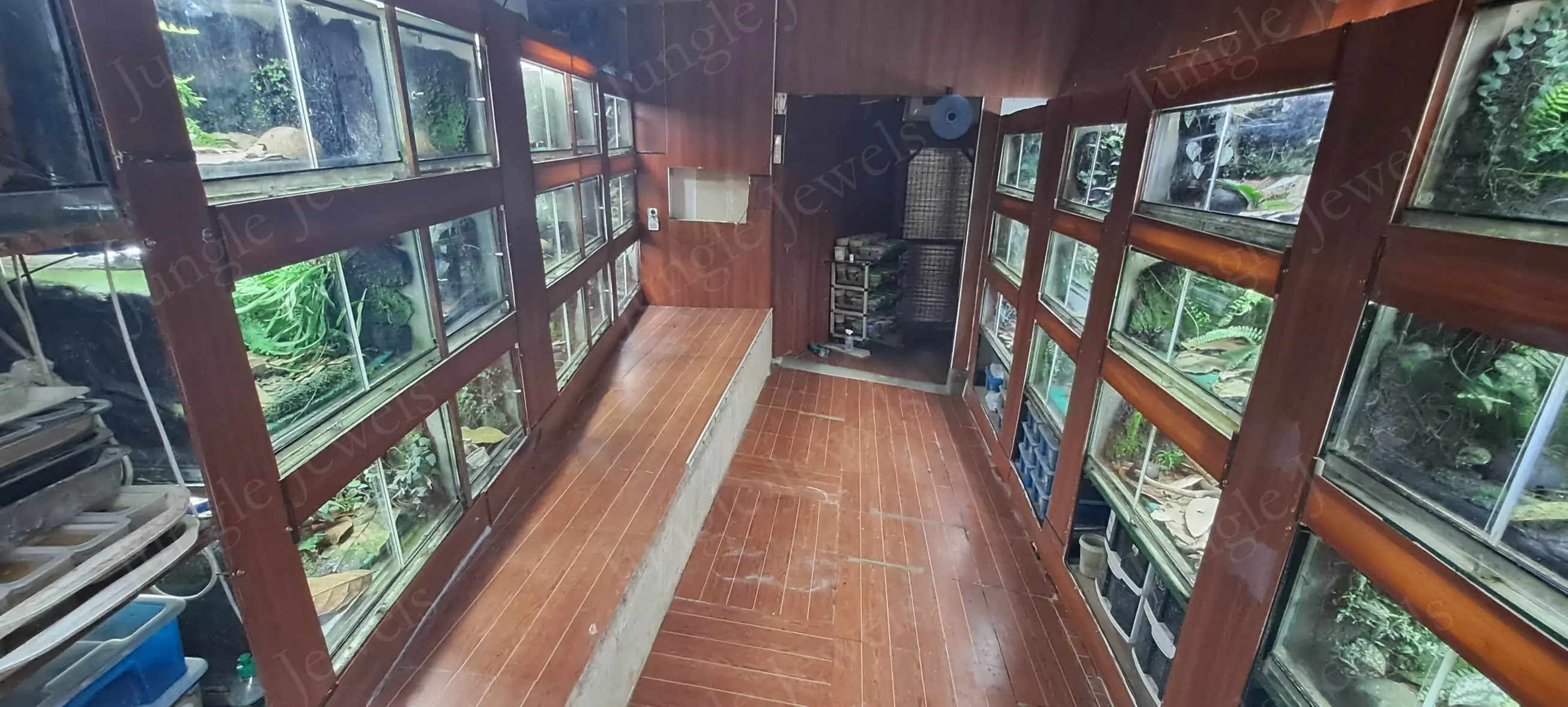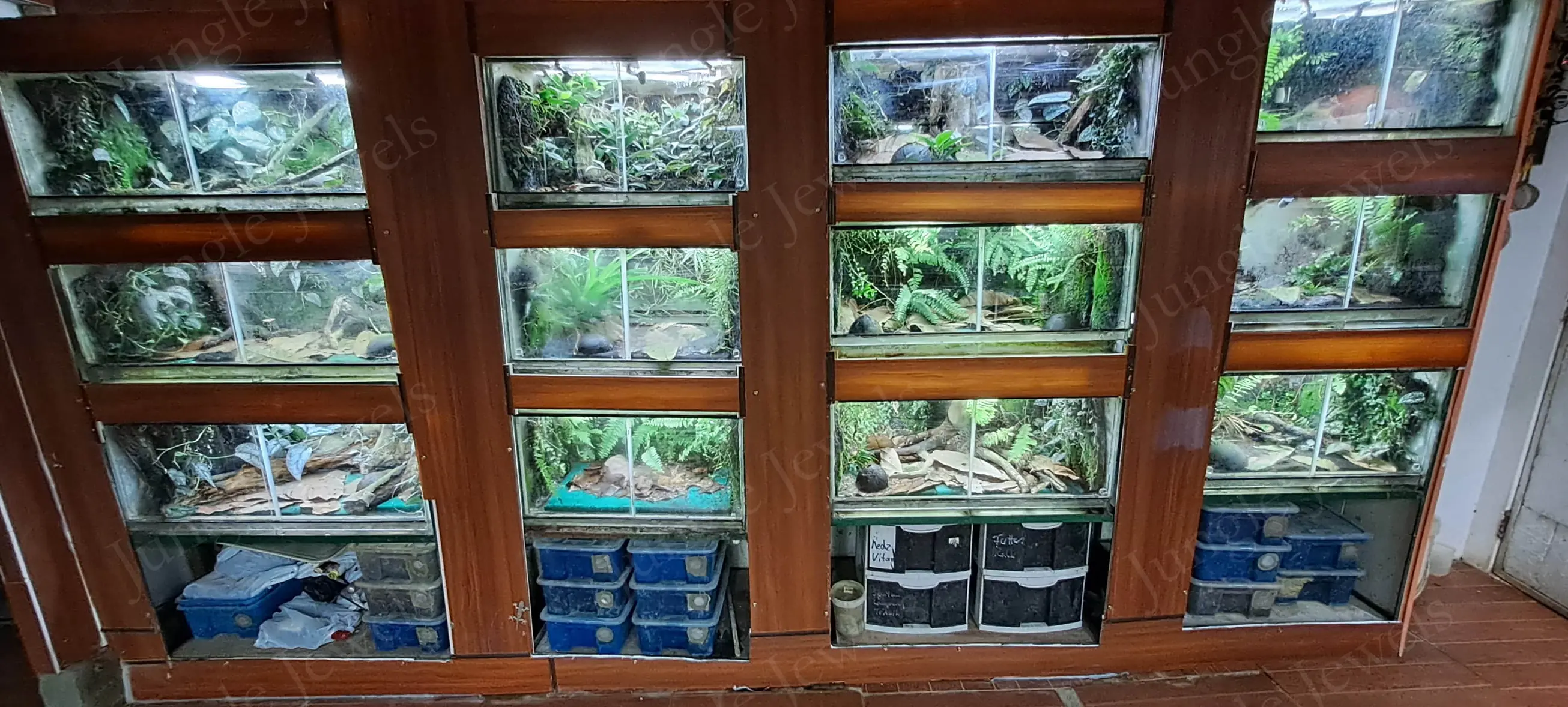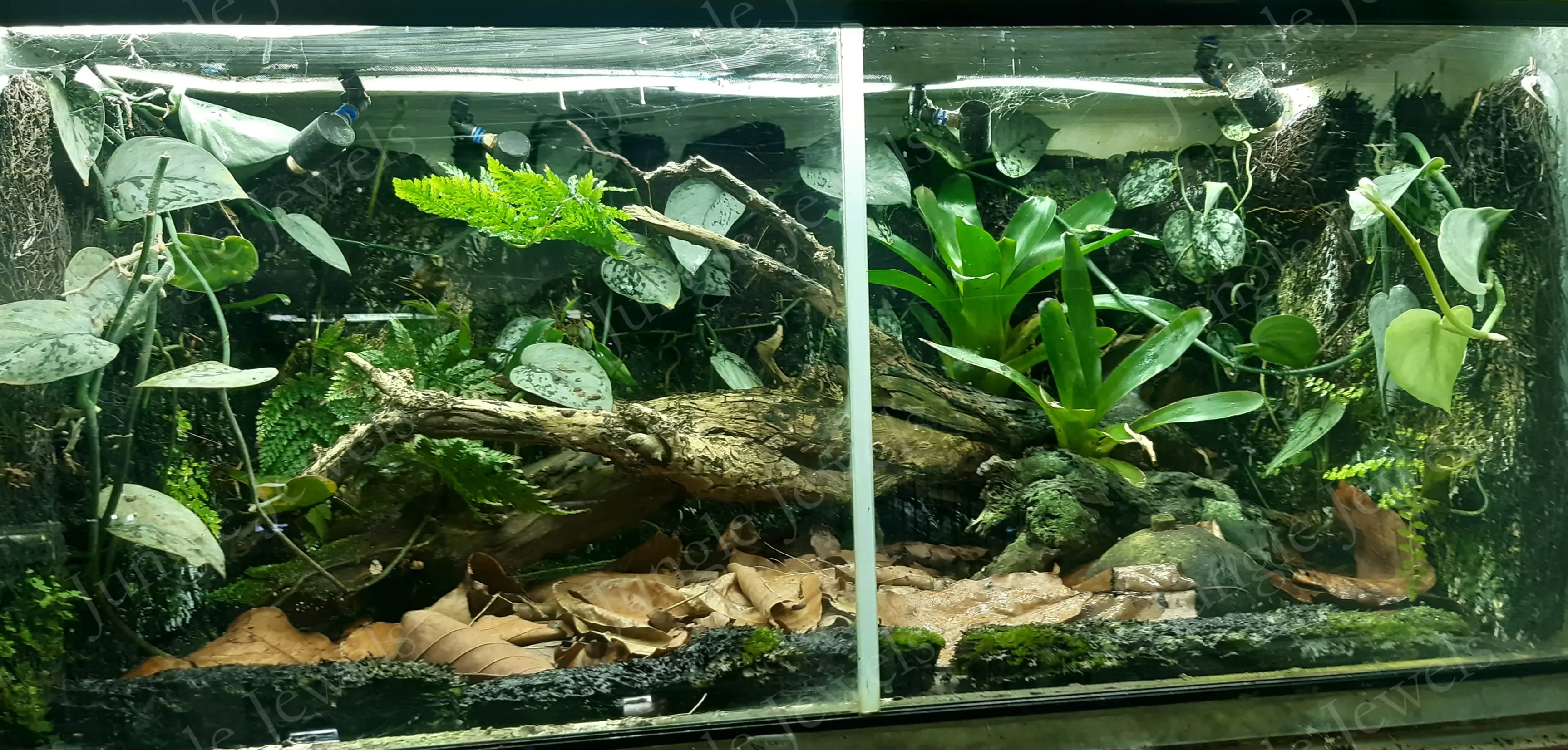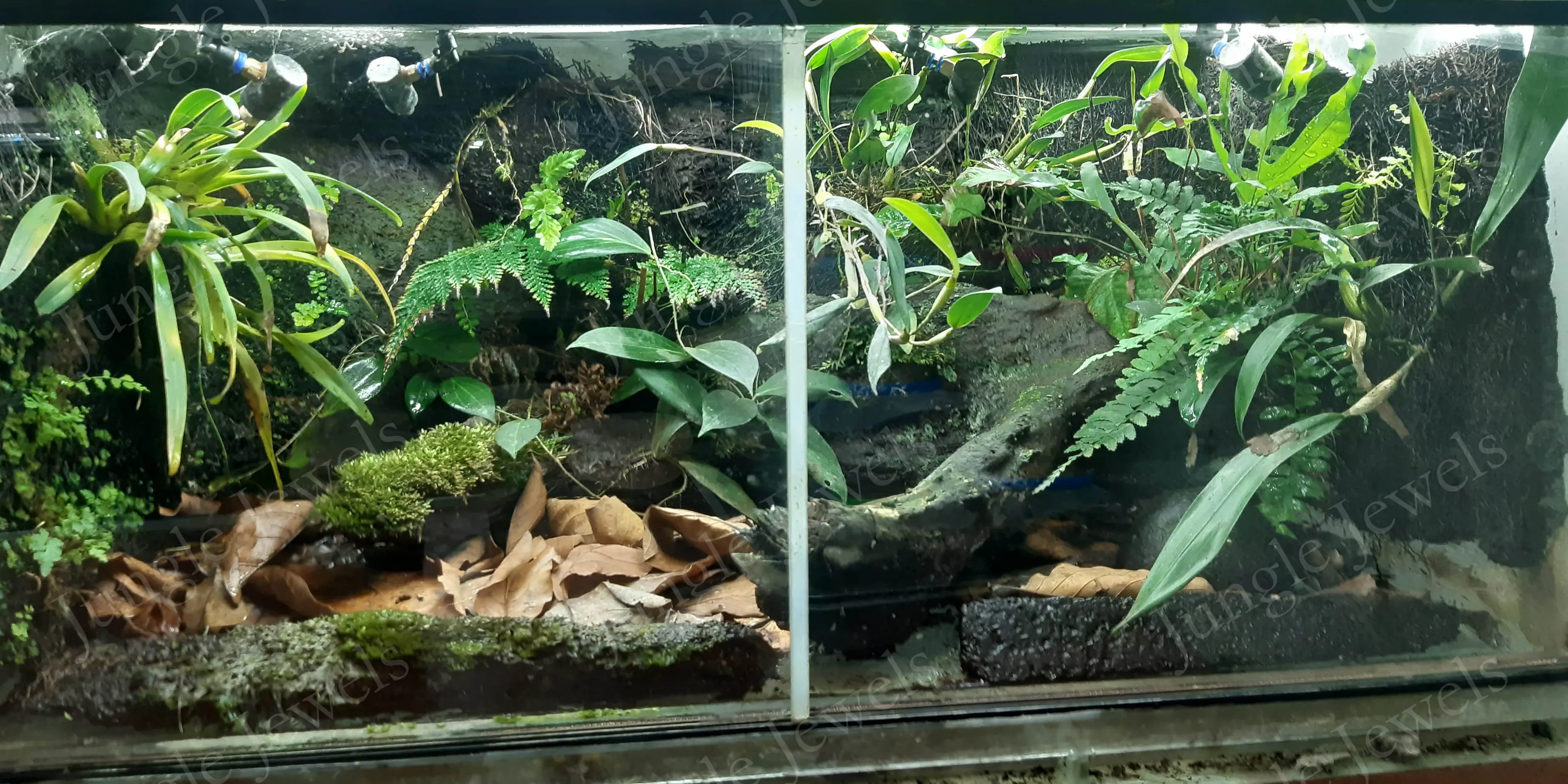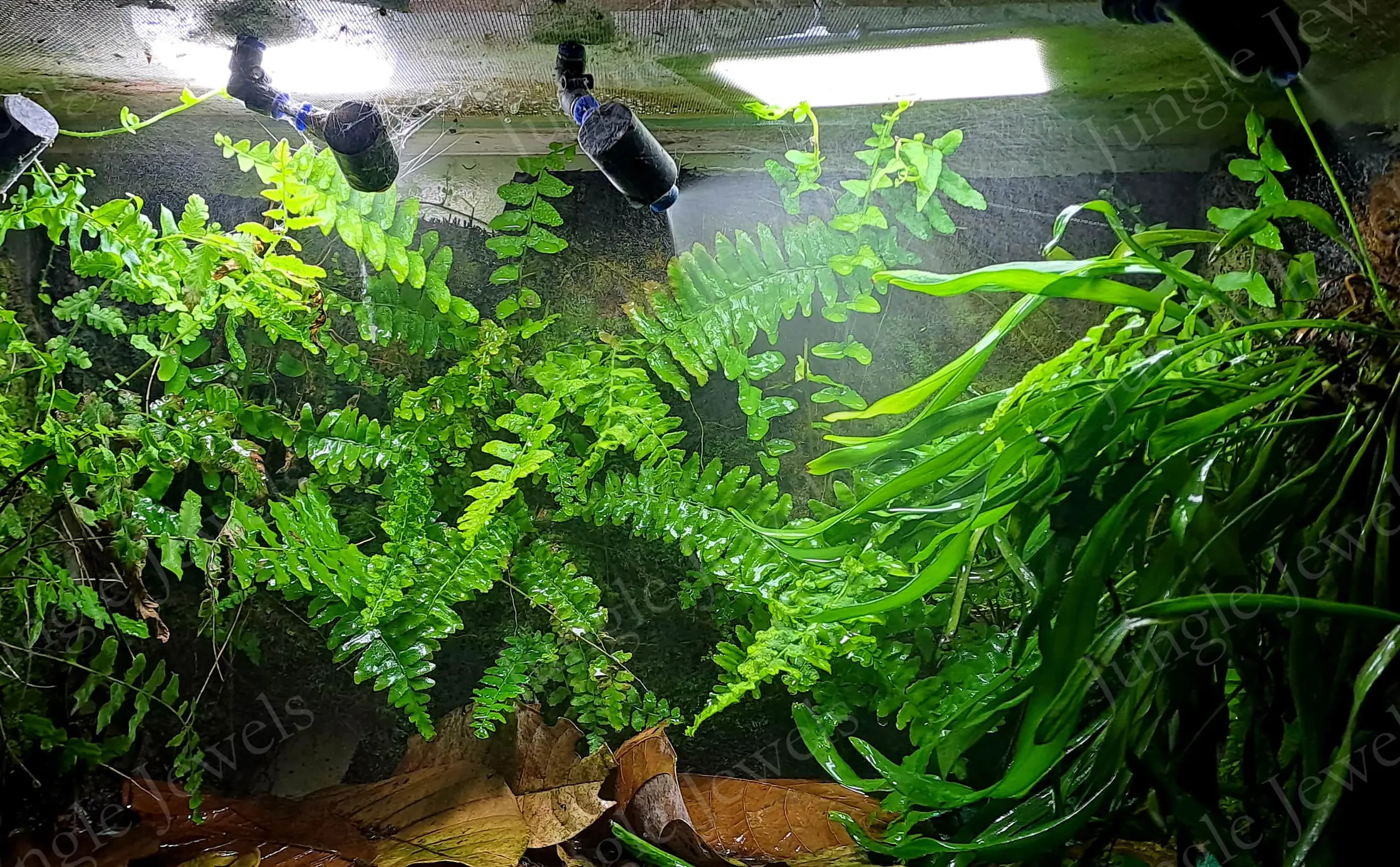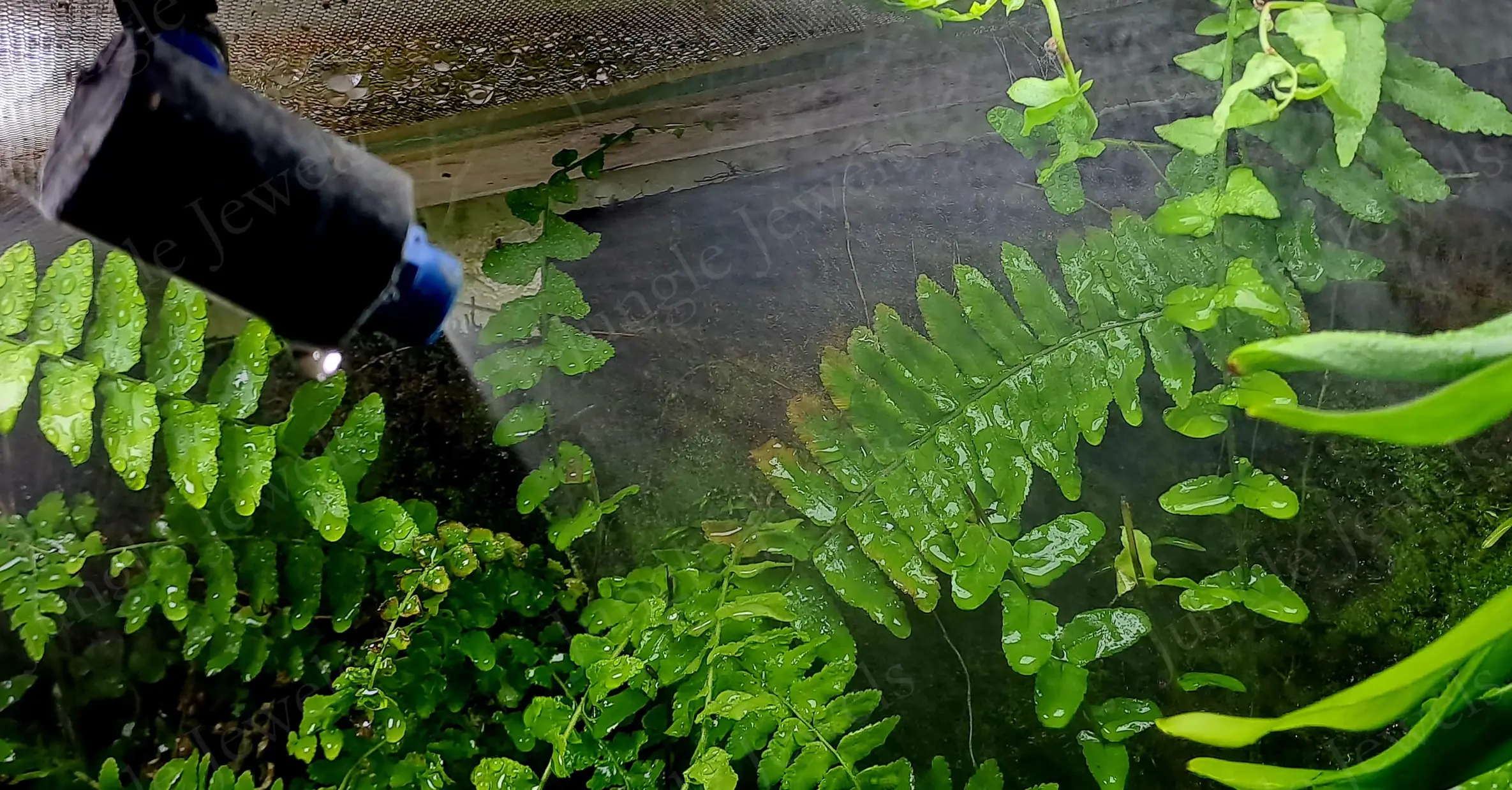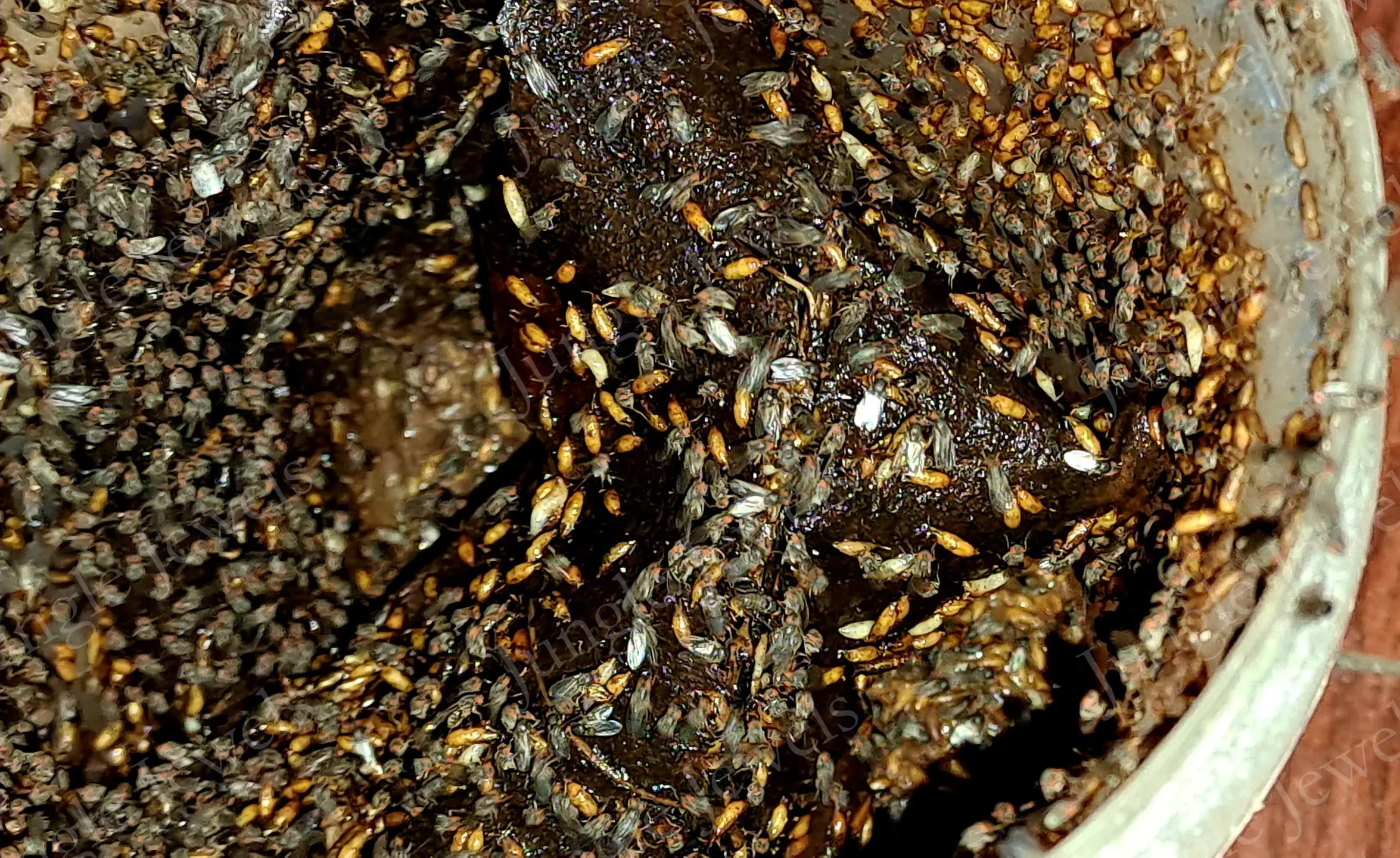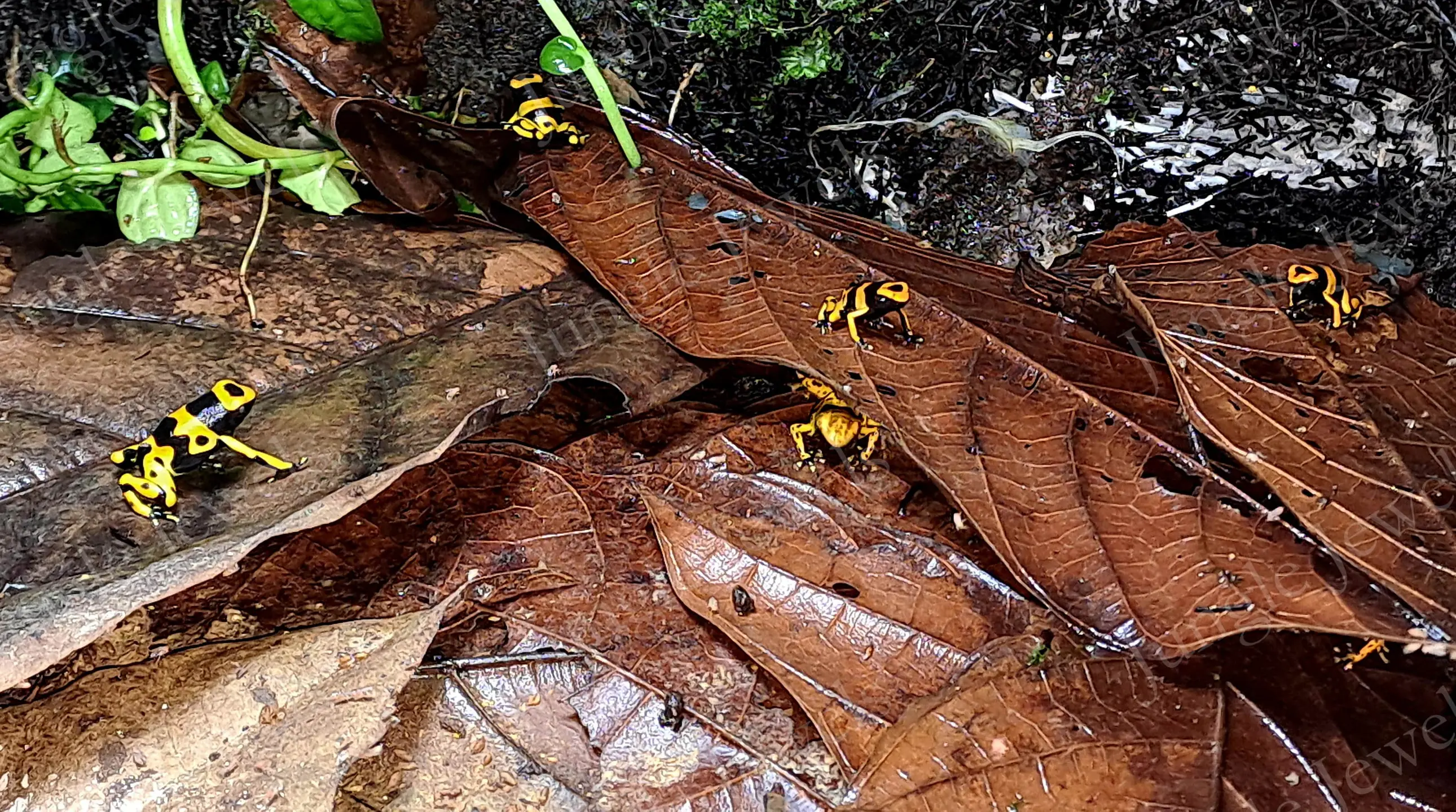Although these animals live in humid areas with a lot of rain, fresh air is essential. Stagnant air in the terrarium, stagnant water, too high humidity all day round will result in diseases and might be fatal. At JungleJewels we prefer double bottom tanks, with an inclined upper bottom. The excess water can flow easily into the front ditch and eventually into a drain. Our tanks have 2 areas covered with mosquito screen, one is just under the sliding door, the other covers almost the entire ceiling. This ensures a continuous airflow. Misting the tank can be accomplished by a handheld sprayer, pressure sprayer or even an automatic misting system with water tank, pump, and nozzles. The latter is particularly convenient, as in case many tanks have to be sprayed.

Poison dart frogs (PDF) or sometimes just called "darts" are a group of frogs inhabiting rainforests of Central and South America. From Nicaragua in the North to Bolivia in the South, they can be found in tropical lowland and highland rainforests, from forest grounds all the way to the canopy. A few species even utilize man made habitats, such as banana and cacao plantations.
















